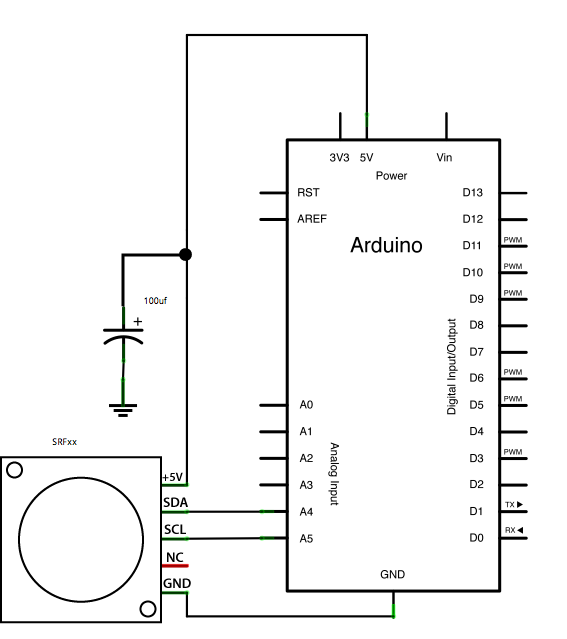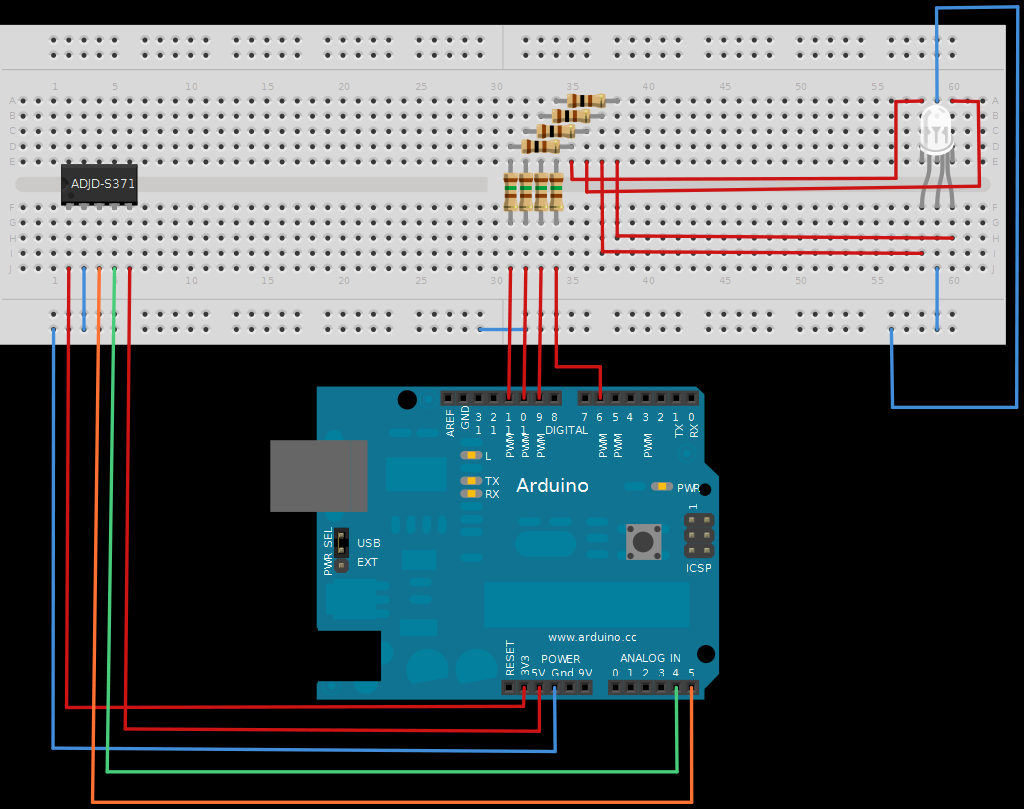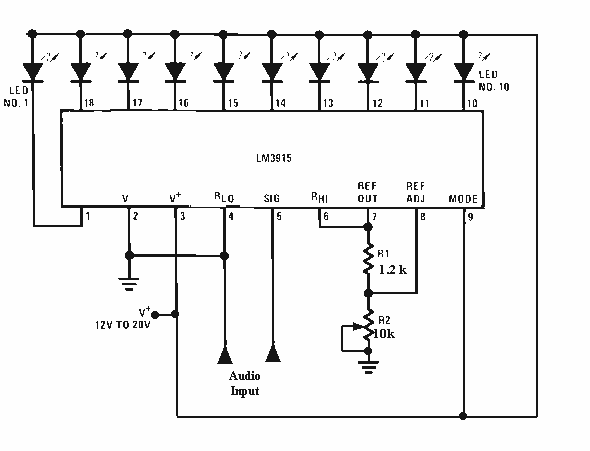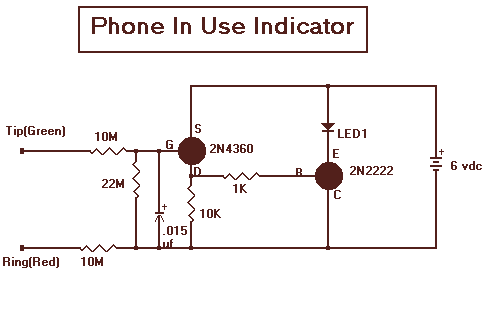
audio Can I use a PNP Transistor with an Electret Microphone to get an non-inverting output for my Arduino
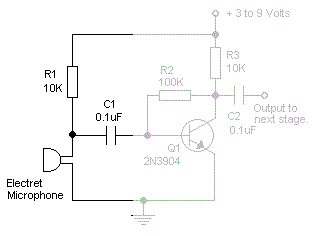
Read the generic sound level from an electret microphone. Several schematics utilize NPN transistors that yield an inverted output (~5V when quiet, ~0V when loud, with linear operation in between). However, a non-inverted output is desired, where a super quiet input gives ~0V and a super loud input gives ~5V. While it is acknowledged that software correction is possible, it is considered counterintuitive. There is a lack of examples for a non-inverting output using a PNP transistor. The request is for a schematic that accomplishes this, providing ~0V when quiet and ~5V when loud, with ~2.5V for medium sound levels. This output should be compatible with the ADC for easy sound level reading. It is noted that feeding voltages below 0V or above 5V to the analog comparator is not permissible. An envelope detector is suggested, but it would only yield a range from 0V to 2.5V. The goal is to achieve a full range from 0V to 5V, with 0V indicating quiet and 5V indicating loud, maintaining linearity throughout. The circuit is noted to generate AC voltage if the output is taken on the right side of a capacitor (C2), as capacitors do not allow DC voltages to pass. The Arduino's analog inputs read from 0-1023 for 0V-5V, and the inquiry suggests that an AC signal may be appropriate. A diode may be necessary to prevent negative voltage from reaching the analog comparator, but it would introduce a 0.6V drop. Adjustments to the supply voltage to 5V are recommended, along with the removal of C2, to read the analog value from the collector of Q1. Experimentation with various sound levels is encouraged to observe changes in the analog reading. Clarification is sought regarding the desired output behavior as input voltage increases. The purpose appears to be the creation of a sound level detector, which can be achieved with minor schematic modifications. Understanding the circuit is emphasized, particularly the role of R1 in supplying power to the microphone (biasing). The microphone generates an AC voltage that fluctuates, resembling a sine wave, which must be processed correctly to isolate the AC component for amplification.
An electret microphone circuit typically consists of the microphone itself, a bias resistor (R1), a coupling capacitor (C1), and a transistor for amplification. In this case, a PNP transistor can be employed to achieve the desired non-inverting output. The electret microphone generates an AC signal superimposed on a DC bias. The bias resistor (R1) provides the necessary voltage for the microphone's operation, allowing it to produce an AC signal that varies with sound pressure levels.
To achieve a non-inverted output, the following configuration is recommended: The electret microphone connects to the base of a PNP transistor through a coupling capacitor (C1). The emitter of the PNP transistor is connected to the positive supply voltage (e.g., +5V), while the collector is connected to the output node. A load resistor (R2) is connected from the collector to ground. This configuration allows the output voltage to rise as the sound level increases, providing the desired linear response where 0V corresponds to silence and 5V corresponds to maximum sound levels.
The coupling capacitor (C1) blocks the DC component from the microphone signal, allowing only the AC component to pass to the base of the PNP transistor. The transistor amplifies this AC signal while maintaining the non-inverted characteristic. The output voltage can be read directly by an analog-to-digital converter (ADC), which will interpret the varying levels between 0V and 5V.
For optimal performance, it is essential to select appropriate values for the resistor (R2) and the coupling capacitor (C1) to ensure that the frequency response of the circuit accommodates the desired sound frequencies. Additionally, a bypass capacitor may be added across the power supply to filter out any noise that could affect the microphone's performance.
In summary, the proposed circuit configuration allows for the generation of a non-inverted output signal from an electret microphone using a PNP transistor, enabling the detection of varying sound levels in a linear manner suitable for ADC input.Read the generic sound level from an Electret Microphone. I`ve seen a number of schematics with NPN transistors, that will provide an inverted output (~5V when quiet, ~0V when loud, linear operation in between). However, I would like non-inverted output (linear operation, super quiet input gives ~0V, super loud input gives ~5V).
I realize I could easily correct for this in software, but it just seems backward to me in a way and I cannot find any examples of a non-inverting output with a PNP transistor. Is there a reason for this beyond being uncommon If it`s possible, could anyone provide a schematic of an electret microphone and PNP transistor that will give ~0V when quiet and ~5V when loud It seems I was rather confused in what I would get as output from the NPN preamp, which would be 0V for silence, and +/- Vin / 2. Here`s what I want instead: 0V when silent, ~2. 5V in medium sound levels, ~5V in maximum sound levels. This could be read by the ADC easily into `sound level` without much work at all. However, I cannot feed voltages < 0V or > 5V to the analog comparator. It looks like I want the above with an envelope detector, however that would only get me from 0V to 2.
5V. How do I make it vary the full 0V to 5V, 0V being `quiet` and 5V being `loud`, with everything in between linear Unfortunately, this circuit will not generate a DC voltage, if the output is taken on the right side of C2. It will generate an AC voltage. This is because of the capacitors. Capacitors do not allow DC voltages pass through them. abdullah kahraman Feb 11 `13 at 12:15 The Arduino has 6 analog inputs, which read 0-1023 for 0V-5V. AC is what I`d be looking for there, right Perhaps I`d need a diode to not be passing negative voltage to the Analog comparator Ehryk Feb 11 `13 at 12:20 Yes, but a diode will drop 0.
6V on itself. Maybe you should try to make the supply voltage 5V. The supply voltage is the one labeled "+3 to 9 Volts". Then remove C2. Then, read the analog value on the collector of Q1. Experiment with different sound levels, for example clap, talk, shout, be quiet, whisper, and see the analog reading changing. However, it will be a sine wave added with a DC value. abdullah kahraman Feb 11 `13 at 12:24 Reading your question and comments it appears that your questiojn is not clearly stating what you want.
It seems that you want an AC level which diminishes in magnitude as the input voltage increases. If this is the case you need to state it clearly. If this is not the case, can you please explain "I`m not looking for a logic 0-1, the Arduino`s analog inputs have a 10-bit ADC that gives 0-1023 for 0V-5V, respectively" in this context. |. Russell McMahon Feb 11 `13 at 13:06. IF you are talking about DC levels the question is still unclear. An AC signal will be centred on the DC bias point. This is relatively fixed with signal strength. Can you very clearly and in simple terms explain EXACTLY what you want the output to do as the input signmal goes from 0VAC to Max Vin AC.
Russell McMahon Feb 11 `13 at 13:07 As far as I understood, you are trying to make some kind of a sound level detector, which will let you detect if there is a sound with a certain volume or not. You can do this with minor changes to the schematic you have. But before that, you should understand the circuit. R1 is for supplying power that is needed by the microphone and this is called biasing the microphone.
A microphone generates an AC voltage, which is sometimes negative and sometimes positive and it changes most of the time. Think of a sine wave. But remember, we had some biasing to it which is a DC voltage. We have to take that out and give only the AC voltage to the amplifier. And doing this is easy with a simple, single capacitor. A capacitor does not let the DC to pass, but lets AC pass easily. We have blocked the DC portion of the voltage on the electret microphone. In this config 🔗 External reference
An electret microphone circuit typically consists of the microphone itself, a bias resistor (R1), a coupling capacitor (C1), and a transistor for amplification. In this case, a PNP transistor can be employed to achieve the desired non-inverting output. The electret microphone generates an AC signal superimposed on a DC bias. The bias resistor (R1) provides the necessary voltage for the microphone's operation, allowing it to produce an AC signal that varies with sound pressure levels.
To achieve a non-inverted output, the following configuration is recommended: The electret microphone connects to the base of a PNP transistor through a coupling capacitor (C1). The emitter of the PNP transistor is connected to the positive supply voltage (e.g., +5V), while the collector is connected to the output node. A load resistor (R2) is connected from the collector to ground. This configuration allows the output voltage to rise as the sound level increases, providing the desired linear response where 0V corresponds to silence and 5V corresponds to maximum sound levels.
The coupling capacitor (C1) blocks the DC component from the microphone signal, allowing only the AC component to pass to the base of the PNP transistor. The transistor amplifies this AC signal while maintaining the non-inverted characteristic. The output voltage can be read directly by an analog-to-digital converter (ADC), which will interpret the varying levels between 0V and 5V.
For optimal performance, it is essential to select appropriate values for the resistor (R2) and the coupling capacitor (C1) to ensure that the frequency response of the circuit accommodates the desired sound frequencies. Additionally, a bypass capacitor may be added across the power supply to filter out any noise that could affect the microphone's performance.
In summary, the proposed circuit configuration allows for the generation of a non-inverted output signal from an electret microphone using a PNP transistor, enabling the detection of varying sound levels in a linear manner suitable for ADC input.Read the generic sound level from an Electret Microphone. I`ve seen a number of schematics with NPN transistors, that will provide an inverted output (~5V when quiet, ~0V when loud, linear operation in between). However, I would like non-inverted output (linear operation, super quiet input gives ~0V, super loud input gives ~5V).
I realize I could easily correct for this in software, but it just seems backward to me in a way and I cannot find any examples of a non-inverting output with a PNP transistor. Is there a reason for this beyond being uncommon If it`s possible, could anyone provide a schematic of an electret microphone and PNP transistor that will give ~0V when quiet and ~5V when loud It seems I was rather confused in what I would get as output from the NPN preamp, which would be 0V for silence, and +/- Vin / 2. Here`s what I want instead: 0V when silent, ~2. 5V in medium sound levels, ~5V in maximum sound levels. This could be read by the ADC easily into `sound level` without much work at all. However, I cannot feed voltages < 0V or > 5V to the analog comparator. It looks like I want the above with an envelope detector, however that would only get me from 0V to 2.
5V. How do I make it vary the full 0V to 5V, 0V being `quiet` and 5V being `loud`, with everything in between linear Unfortunately, this circuit will not generate a DC voltage, if the output is taken on the right side of C2. It will generate an AC voltage. This is because of the capacitors. Capacitors do not allow DC voltages pass through them. abdullah kahraman Feb 11 `13 at 12:15 The Arduino has 6 analog inputs, which read 0-1023 for 0V-5V. AC is what I`d be looking for there, right Perhaps I`d need a diode to not be passing negative voltage to the Analog comparator Ehryk Feb 11 `13 at 12:20 Yes, but a diode will drop 0.
6V on itself. Maybe you should try to make the supply voltage 5V. The supply voltage is the one labeled "+3 to 9 Volts". Then remove C2. Then, read the analog value on the collector of Q1. Experiment with different sound levels, for example clap, talk, shout, be quiet, whisper, and see the analog reading changing. However, it will be a sine wave added with a DC value. abdullah kahraman Feb 11 `13 at 12:24 Reading your question and comments it appears that your questiojn is not clearly stating what you want.
It seems that you want an AC level which diminishes in magnitude as the input voltage increases. If this is the case you need to state it clearly. If this is not the case, can you please explain "I`m not looking for a logic 0-1, the Arduino`s analog inputs have a 10-bit ADC that gives 0-1023 for 0V-5V, respectively" in this context. |. Russell McMahon Feb 11 `13 at 13:06. IF you are talking about DC levels the question is still unclear. An AC signal will be centred on the DC bias point. This is relatively fixed with signal strength. Can you very clearly and in simple terms explain EXACTLY what you want the output to do as the input signmal goes from 0VAC to Max Vin AC.
Russell McMahon Feb 11 `13 at 13:07 As far as I understood, you are trying to make some kind of a sound level detector, which will let you detect if there is a sound with a certain volume or not. You can do this with minor changes to the schematic you have. But before that, you should understand the circuit. R1 is for supplying power that is needed by the microphone and this is called biasing the microphone.
A microphone generates an AC voltage, which is sometimes negative and sometimes positive and it changes most of the time. Think of a sine wave. But remember, we had some biasing to it which is a DC voltage. We have to take that out and give only the AC voltage to the amplifier. And doing this is easy with a simple, single capacitor. A capacitor does not let the DC to pass, but lets AC pass easily. We have blocked the DC portion of the voltage on the electret microphone. In this config 🔗 External reference

